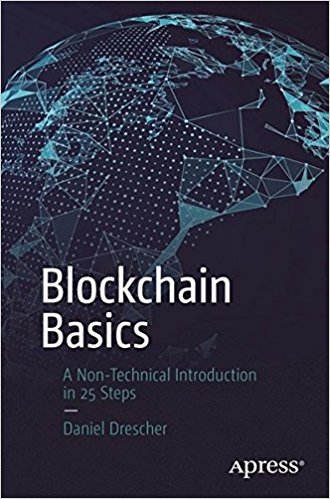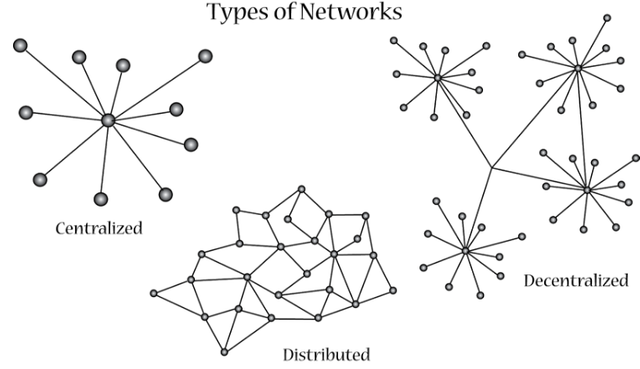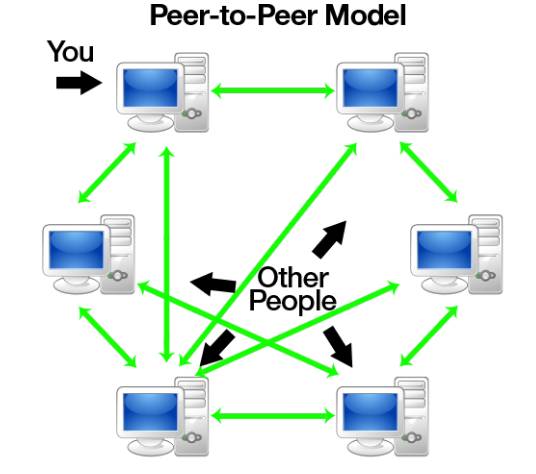To launch our semester-long study of blockchain applications, it only made sense to begin with a very basic overview of the blockchain. When I was first introduced to the blockchain four years ago I could not even begin to conceptualize what this “open ledger technology” looked like and I definitely could not grasp the very real and very exciting implications of this technology. Lydia and I came across Blockchain Basics: A Non-Technical Introduction in 25 Steps by Daniel Drescher that was published in 2017 and decided to crack it open and get started. This book was fairly simple to obtain through our college library loan system but it is also widely available as an ebook. More info here

I have never taken any computer science classes and the technical aspect has been the most difficult for me to grasp. Drescher presents the information through very digestible non-technical language and metaphors. Despite a few gaps, it’s a quick and clean read that I would highly recommend!
In this post I’ll very concisely lay out some key concepts that Drescher presented in Blockchain Basics as well as present a few points I want to further explore over the next few weeks. Feel free to comment your own questions or thoughts—no better way to learn a peer-to-peer system than hearing from our peers!
Centralized vs. Distributed Systems

- The Blockchain moves away from centralized systems, instead creating a network of distributed power.
- Blockchain systems are composed of “nodes”
- Each node is a single source of computing, bandwidth, and storage power that is connected to other nodes in the network to collectively build and strengthen a network
- There are “hybrid” options that form distributed networks composed of more centralized node clusters
Advantages of Distributed Systems:
- Higher computing power
- Cost reduction
- Higher reliability
- Natural ability to grow
Disadvantages of Distributed Systems
- Coordination overhead
- Communication overhead
- Dependency on networks
- Security issues
- Program complexity
Provisional Definition
Drescher comes to define the blockchain as:
A purely distributed peer-to-peer system of ledgers that utilizes a software unit that consist of an algorithm, which negotiates the informational content of ordered and connected blocks of data together with cryptographic and security technologies in order to achieve and maintain its integrity (35)
The Peer-To-Peer System
Drescher explains “peer-to-peer” using the music sharing program Napster as an example of disintermediation in the music industry.

In the case of Napster, audio files are uploaded, stored, and shared on a peer-to-peer network rather than being distributed solely from singular intermediaries. This concept can be applied beyond the music industry to explain much more vast network functionality of the blockchain. This metaphor struck me a little off because I think Napster is somewhat centralized...which is what lead to its eminent downfall.
Trust in the Decentralized System
Drescher continuously stresses the crucial undercurrent of trust necessary to successfully functioning blockchain systems. Two of the most important functions the blockchain serves exist paradoxically: privacy and transparency. Navigating having both at once requires delicacy, technical security measures, and network trust.
Limitations of Blockchain Technology
- Technical limitations such as transaction times, security issues, etc.
- Legal acceptance
- User acceptance
- Hidden centrality
Technical limitations are personally, the least of my worries. Just in the time since this book was published a few months ago, we’ve already seen huge strides in improving transaction times and security. Time will only bring more improvements. The other three points get to the core of my biggest concerns of implementation of blockchain tech. We’re already starting to see legislation formed to handle taxation issues and we’re seeing major banks tack on huge fees or refuse to process transactions on sites such as coinbase. User acceptance, or alternatively, user accessibility is what kept me at an arms length from crypto for so long. Understanding the nuances behind cryptocurrency and blockchain based applications is overwhelming and intimidating for people with non-technical backgrounds. Finally, hidden centrality is something we see right here on Steemit. The disparity between minnows and whales is significant and reflects greater issues with hidden groups of people with overwhelming power and influence in this system.
The Future of the Blockchain
Drescher and countless others affirm the vast possibilities for the future of blockchain tech. The applications are seemingly endless. I won’t go too much into what that might look like because this is one our main interests in this semester-long study and you will surely hear more from us on this point. But for now...all signs point to a blockchain takeover as we know it.
All for now! For more info on our project check out our intro video here
Great blockchain intro! Sorry I missed this during voting... Y'all, please ping me whenever you post so I don't miss the chance to promote what you're doing. Anyway, wonderful work so far, keep it up! :) Cheers, b
Downvoting a post can decrease pending rewards and make it less visible. Common reasons:
Submit